Home Safety Checklist For Youngstown
Staying safe and secure in your house should be your topmost priority. But are you forgetting a few key safety items? Use this home safety checklist for Youngstown and find out where your house needs greater attention.
This guide starts with a few whole-house safety techniques, and then we whittle it down room-by-room. Then, call (330) 355-9086 or send in the form below for additional information.
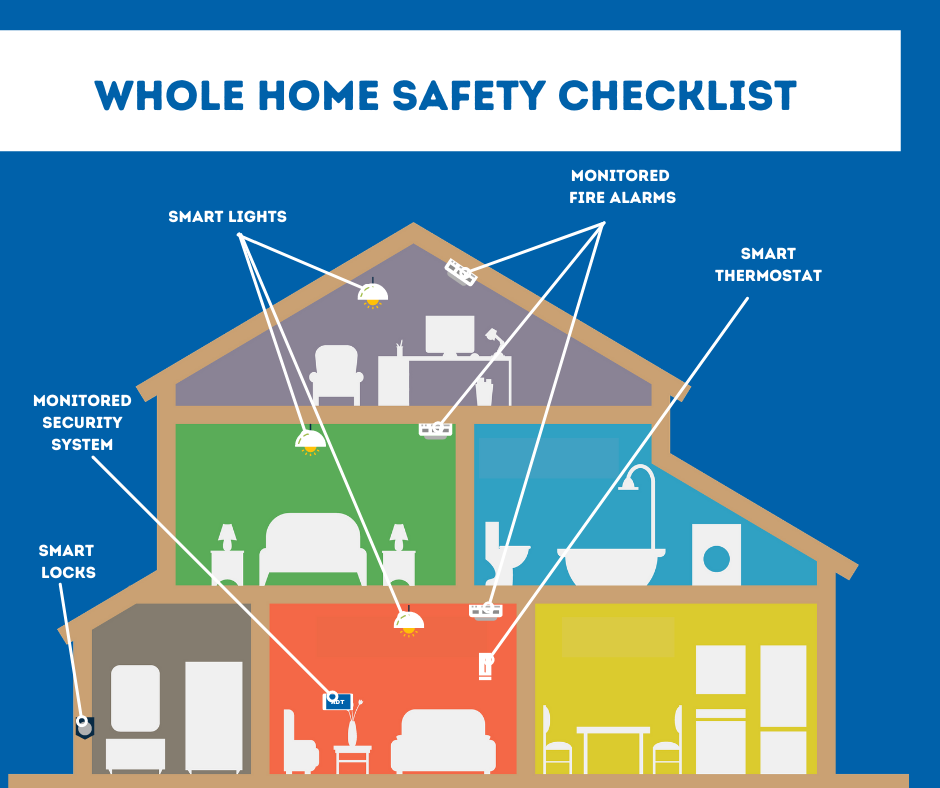
General Home Safety Checklist for Youngstown
While you should employ a room-to-room approach to home safety in Youngstown, there are some things that are good for the whole house. These items can talk with one another through a wireless hub, and often can respond to other things. You can also manage each of your home safety equipment through a mobile security app, such as ADT Control:
-
Monitored Security System: Each one of your windows and doors should use a sensor that notifies your family to intrusion. As your alarm trips, your monitoring center answers the call and contacts a first responder.
-
Smart Lighting For Most Rooms: Sure, you can program your smart lights to make your home more eco-conscience. But they can also help you remain safe in an emergency. Make your smart bulbs come on when a security alarm triggers to scare off intruders or light your way to a secure place.
-
Smart Thermostat: Likewise, a smart thermostat in Youngstown should save you between 10%-15% in gas and electric spending. But it also can flip on an exhaust fan if you have a fire.
-
Monitored Fire Alarms: It’s code that you should have a fire detector on every level. You can improve your fire game by utilizing a monitored fire alarm that detects both smoke and heat, and alerts your round-the-clock monitoring agents when it detects a fire.
-
Smart Door Locks: Every door that utilizes a keyed lock can upgrade to a smart lock. Now you can preset codes to each family member and get notifications to your phone when your locks are activated. Your doors can even automatically turn off, helping you to quickly flee the house when you have an emergency.
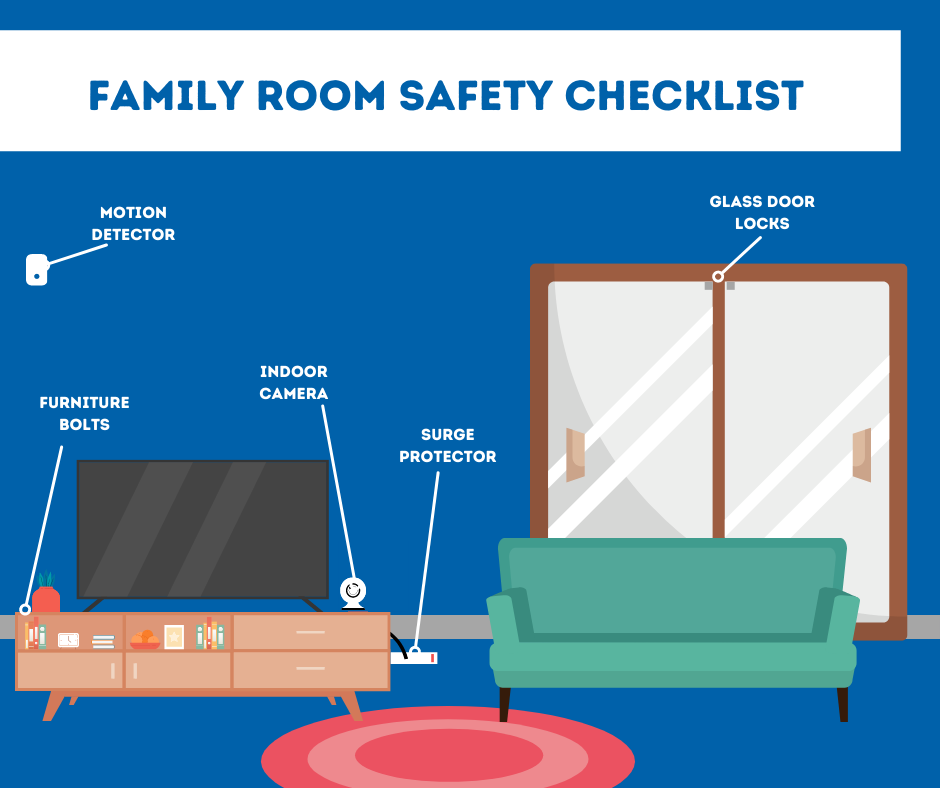
Living Room/Family Room Safety Checklist For Youngstown
You’ll hang out most in your living room, so it can be the perfect place to begin your home safety optimization. Electronics, like your TV or stereo system, probably are located in your family room, making it an alluring room for robbers. Start with hanging a motion sensor or security camera by the doorway, then take a look at the following safety protocols:
-
Motion Sensors: By putting in motion sensors, you’ll have a shrieking alarm if they sense suspicious motion in your family room. The best devices are motion detectors that aren’t set off by pet movements or you’ll have your sirens go off every time your dog passes through for a bite of food.
-
Security Camera: An indoor security camera gives you a visual on your living room. Watch constant feeds of your room so you can find out what’s happening from the mobile app. Or talk with family members in the room with the two-way talk feature.
-
Surge Protector/Outlet Maintenance: Make sure you protect those electronics and stop overburdening your circuits with a surge protector. For additional energy-efficiency, install a smart plug with a surge protector in the unit.
-
Entertainment Center Attached To The Wall: If you have babies or toddlers, you’ll want to attach your bookshelves and entertainment center to the wall. This is especially important if your living room uses rugs or carpet that can make heavy objects extra unstable.
-
Special Locks For Sliding Glass Doors: If your family room has a glass door that opens to a backyard, deck, or outside porch, you already can see that the latch is pretty worthless. Use a special lock, like a cross bar or small locks that are located on the top and bottom of the opening.
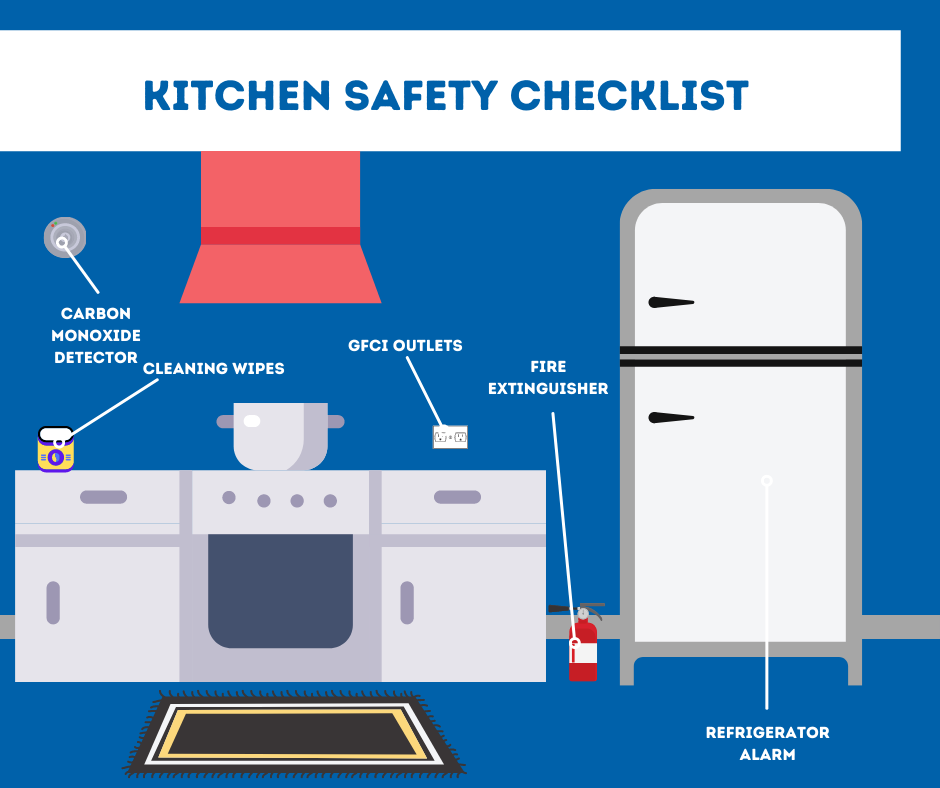
Kitchen Safety Checklist For Youngstown
The kitchen has room for items that should add safety and security to your house. Some of these things should be easy to add and should be purchased from the grocery store:
-
Fire Extinguisher: A fire can spring up from an overfilled frying pan or a towel that’s too close to a burner. Always keep a fire extinguisher at the ready for any stove or oven emergencies.
-
Circuit Interrupter Box On Every Outlet: A circuit interrupter outlet should be used everywhere they’re close to running water to lessen the chance of a deadly shock. That includes the plug outlets around your kitchen counter and sink. Since the late ‘80s, it’s been required to have one circuit interrupter outlet per circuit. But all your outlets will flip off if any outlet detects a surge, so you’ll want to install an unchained GFCI on each outlet.
-
Monitored Carbon Monoxide Detector: A CO detector is recommended for the kitchen if you have gas for the oven and stove. If your gas lines leak, the CO detector will play a loud, buzzing siren and contact your monitoring agent.
-
Disinfectant Wipes Or Spray: The most overlooked safety problem in the kitchen is the invisible bacteria and protein that comes with blood from meat and dairy. Always store antiviral wipes or a bleach spray to scrub off your counters before and after cooking.
-
Refrigerator Alarm: The food items in the refrigerator should stay at a constant temperature to be healthy to eat. If you leave the fridge or freezer door open too long, then an alarm beep will remind you to shut it securely. Some appliances come with a pre-installed alarm, some won’t, and you’ll have to get a refrigerator alarm from online.
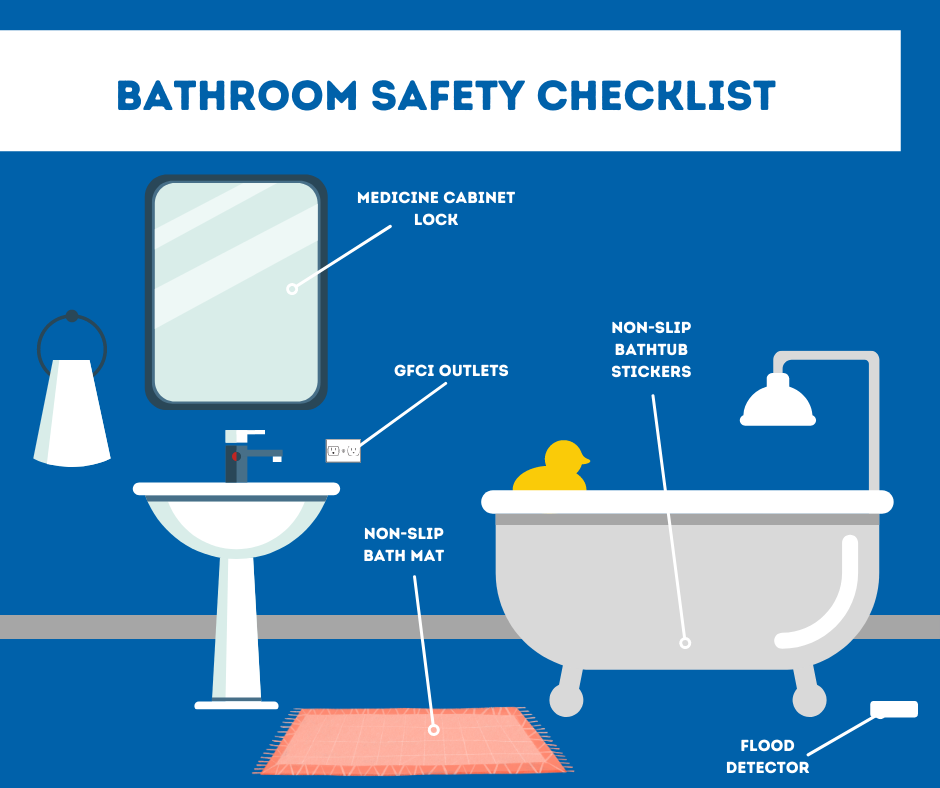
Bathroom Safety Checklist For Youngstown
Just because you may not have a lot of room in your bathroom doesn’t mean that there aren’t safety issues. From flood detectors to medicine care, here are five safety tips for your bathroom:
-
Flood Sensors: A leaking sink or bathtub can lead to extensive damage. Deal with a leak with a flood detector and save yourself from reflooring the whole bathroom.
-
Textured Shower Mats: A fall in the bathroom can be a painful occurrence, causing bumps, gashed heads, or sprained ankles. Or steer clear from these hazards with a textured bathroom mat for while you towel off.
-
Textured Bathtub Stickies: Like a tiled floor, a bathtub can be a slick place to move in. Make sure every bathtub has some non-slip strips so your feet and toes have a textured patch for stability.
-
Medicine Door Latch: If you have little children or a family member with memory lapses, you need to take additional care regarding prescription medicine. Safeguard your prescriptions by installing a medicine cabinet with a child-proof lock.
-
GFCI Circuits: Just like the kitchen, you will have to also use a grounded circuit interrupter outlet on each bathroom outlet. This will cut the current if water splashes on them or they experience a sudden surge from an electric razor or hair dryer.

Kid’s Bedroom Safety Checklist For Youngstown
A child’s bedroom should pair safety with manageability. If their window shades or other items are safe but tricky to use, then your children may try unsafe activities -- like climb a bookshelf -- to use them. Try these straightforward, and safe, ideas:
-
Cord-Free Window Coverings: Safety agencies have designated cords from shades and blinds an unsuspecting problem for children and animals. Use motorized treatments that kids can easily open and close via remote control. Or even better, connect your motorized coverings to your ADT smart hub so they open automatically when the sun comes up, and go down in the evening for added darkness.
-
Tableside Security Camera: An indoor security camera placed on your toddler’s dresser can behave as an HD baby monitor that you can watch with your phone. And when they want something, they can push the two-way talk button that comes with the camera.
-
Outlet Plug Covers: While every outlet should have covers on them when you have young children, this is especially urgent in their bedroom. It’s the main place in your home where your toddler will most likely be solo without parental supervision.
-
Window Safety Ladder: If you have bedrooms on the second level, then you need to have a window escape ladder. These can let a child leave the house when the hallway or ground floor are on fire. Make sure to go over how to employ the ladder one or two times a year.
-
Toy Chest Or Low Shelves: It’s interesting to look at a toy chest as a safety item, but you’ll understand if you’ve ever walked on an action figure in your bare feet. A uncluttered floor let your child have a quick escape if there’s a safety or security event.
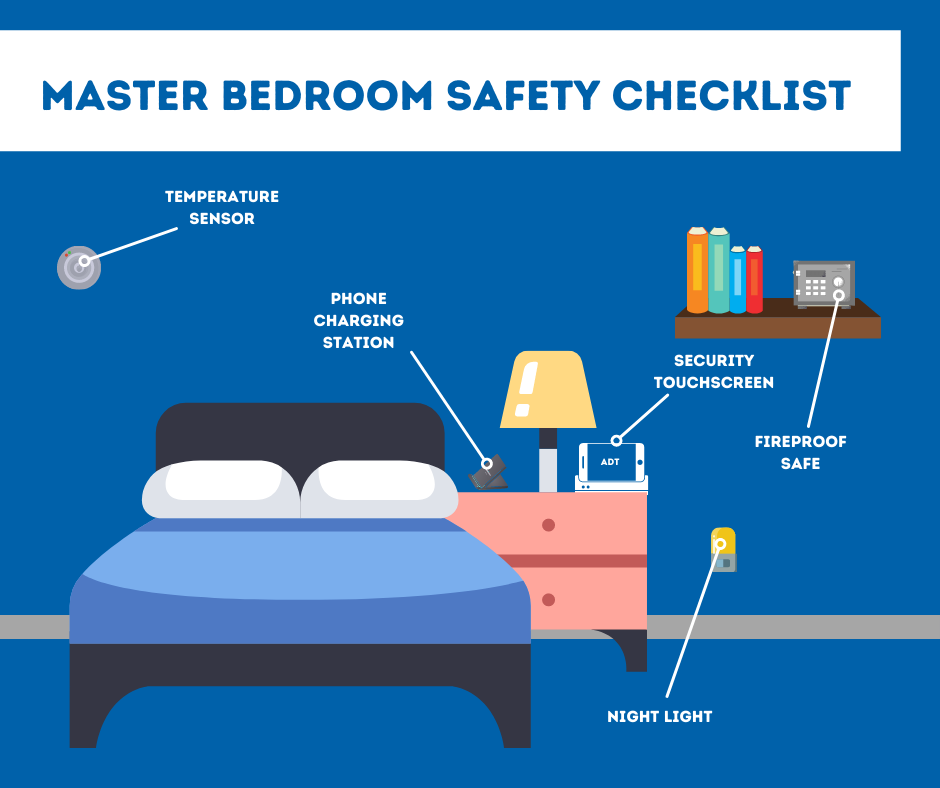
Master Bedroom Safety Checklist For Youngstown
The main bedroom should be a refuge, so let your safety items make life easier if you have an emergency event. After all, being startled awake by a loud siren can be quite a shock.
-
Smart Hub Touchscreen: Having a smart hub on your dresser lets you see what’s happening without jumping out of bed. You could also use your ADT phone app. However, the HD touchscreen can be faster to use when you’re coming out of sleep and finding your bearings.
-
Device Charging Area: We depend on our smartphones for so many things now alarm clocks, web browsers, game machines, and sometimes even phones. However, an uncharged phone in the middle of the night cuts us off from reaching help if during an emergency. So, a charging station or cord becomes an essential.
-
Nightlights Or Voice Activated Smart Lights: A plug-in light can be a beacon when you’re jolted awake from an alarm or other noises. If you can’t fall asleep with an outlet light, put in smart bulbs in your bedroom and hall. Then you can have light anytime with a mobile device or vocal command.
-
Fireproof Safe: Stash your vital paperwork like social security cards, passports, or a spare checkbook in a fireproof safe. Your safe can be a large one that is located in a corner or a slender handheld safe that you can snatch as you escape during a fire or other emergency.
-
Heat Sensor: The problem with bedrooms is that they might feel too stuffy or be frigid because they are far from the thermostat. A heat sensor can talk to your smart thermostat so you will have a pleasant, peaceful sleep at the perfect climate.
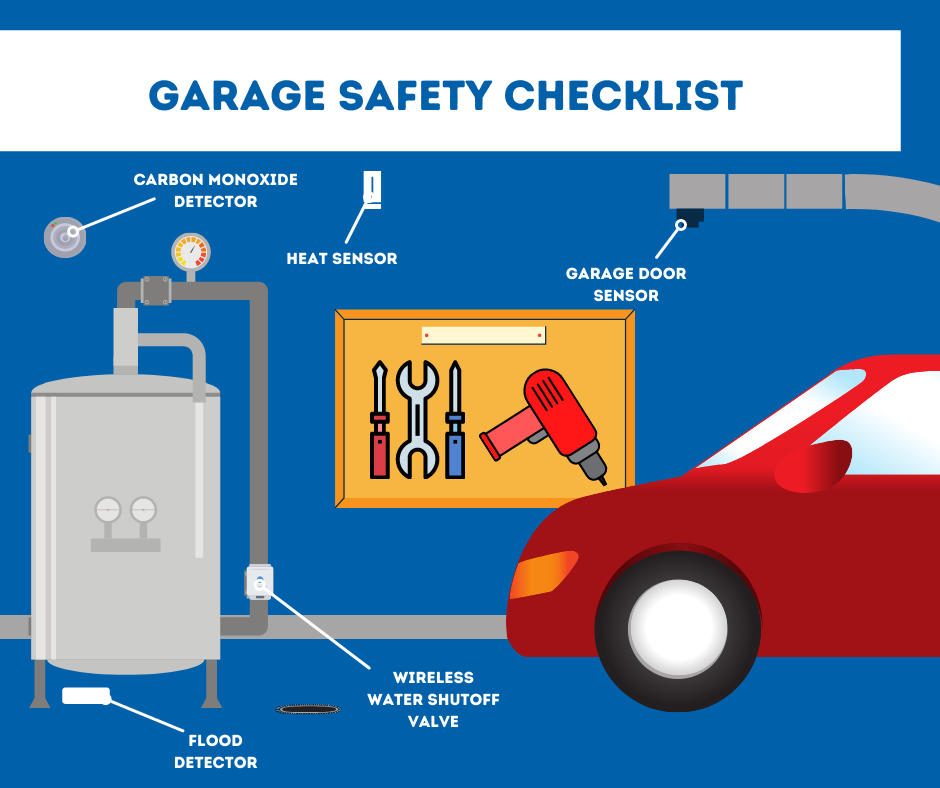
Basement/Garage Safety Checklist For Youngstown
Most safety issues in the garage or basement are with your water heater or furnace. Seeing problems before they start can stop bigger problems in the future. So, as you take a look around your basement or garage, check over these crucial items:
-
Flood Sensor Or Sump Pump Alarm: Putting a flood alarm next to your water heater and sump pump drain can stop you from wading into a pond when you walk into your garage or basement. The last you need is to spend the weekend drying your floor and sorting through all those ruined boxes.
-
CO Alarm: It’s nice to have a CO alarm in a place where a natural gas leak can spring up. If you use gas heat, try to install an alarm in the same area as your HVAC unit.
-
Remote Water Shutoff Valve: If your water detector senses a hot water leak or a busted pipe, then you will have to cut off the primary water pipe quickly. With a WiFi shutoff valve, you can block water flow from anywhere in the world. That’s nice when you’re visiting relatives and see a water leak alert on your phone.
-
Garage Door Sensor: Leaving the garage door open leads to all types of headaches. You can lose a bunch of HVAC energy through that open door, and rodents or lurkers can just wander in. A remote sensor will alert you to a forgotten garage door and lets you close it remotely.
-
Temperature Sensor: A temperature sensor in your garage or basement is handy if you worry about freezing pipes. The heat in these areas can be drastically different than the main part of the house, so you may want to keep a closer eye on the temp with the ADT mobile app.
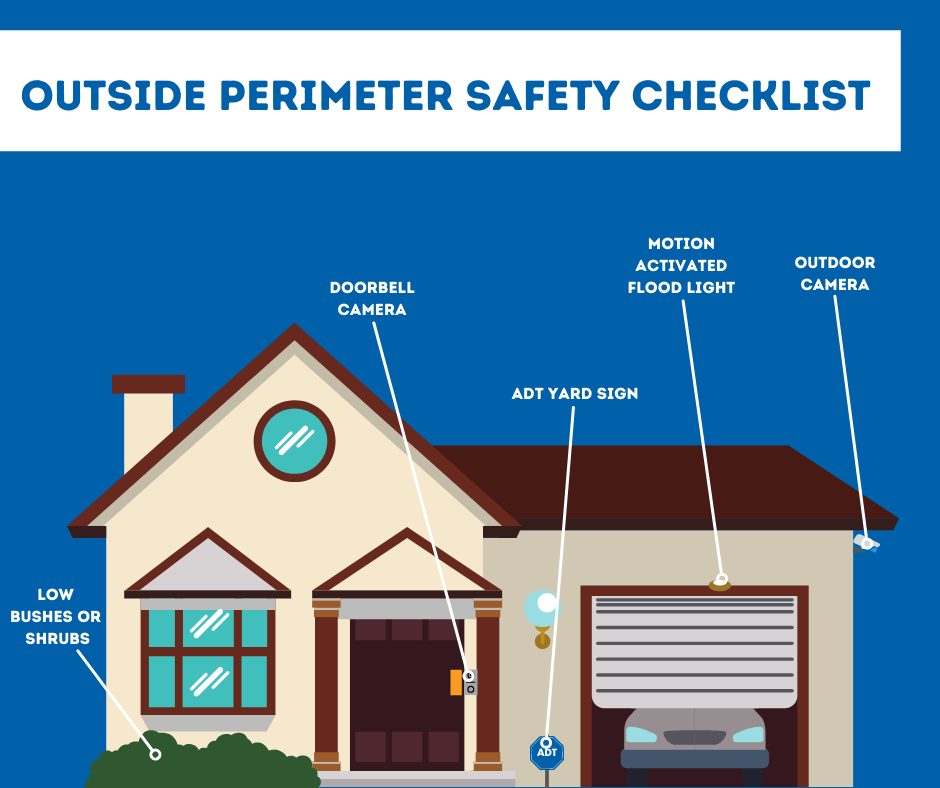
Outside Perimeter Safety Checklist for Youngstown
Your landscaping, driveway, and front walk are just as important to make safe as the interior of your home. Try this checklist to make your outside safe:
-
Doorbell Camera: See who’s arrived at the door before you open it and talk to visitors. Get a visual on packages and review video clips if they disappear.
-
Outdoor Security Camera: You can hang outdoor cameras to alert you to unusual lurkers in your back yard. These devices are nice in areas where you might not have a window installed -- like around a cellar or by the garage.
-
Window Height Shrubs: High shrubs can offer some solitude, but they also obscure your view of the yard and curb. Don’t provide potential thieves a dark shadow to hide. Plus, tall bushes, shrubs or trees against your structure can clog gutters and bring in pests.
-
ADT Signage: One of the largest disincentives for a thief is alerting potential intruders that you have a monitored security system. An ADT yard stick by the front door and a window sticker will alert lurkers that they ought to keep walking to an easier target.
-
Motion Activated Flood Lighting: Light is the best deterrent to people who sneak around in the unlit places. Motion-triggered flood lights on your deck, porch, or garage can help scare lurkers away. Flood lights also help you get inside when you arrive to the house late at night.
Call Secure24 Alarm Systems To Help Complete Your Home Safety Checklist for Youngstown
While Secure24 Alarm Systems can’t help you with every item on your Youngstown home safety checklist, we can bring you a state-of-the-art home security system. With alarms, security cameras, and home automation, we can personalize the best system for your family’s needs. Simply contact (330) 355-9086 and talk to a professional or send in the form below. Or personalize your own ADT system with our Security System Designer.
